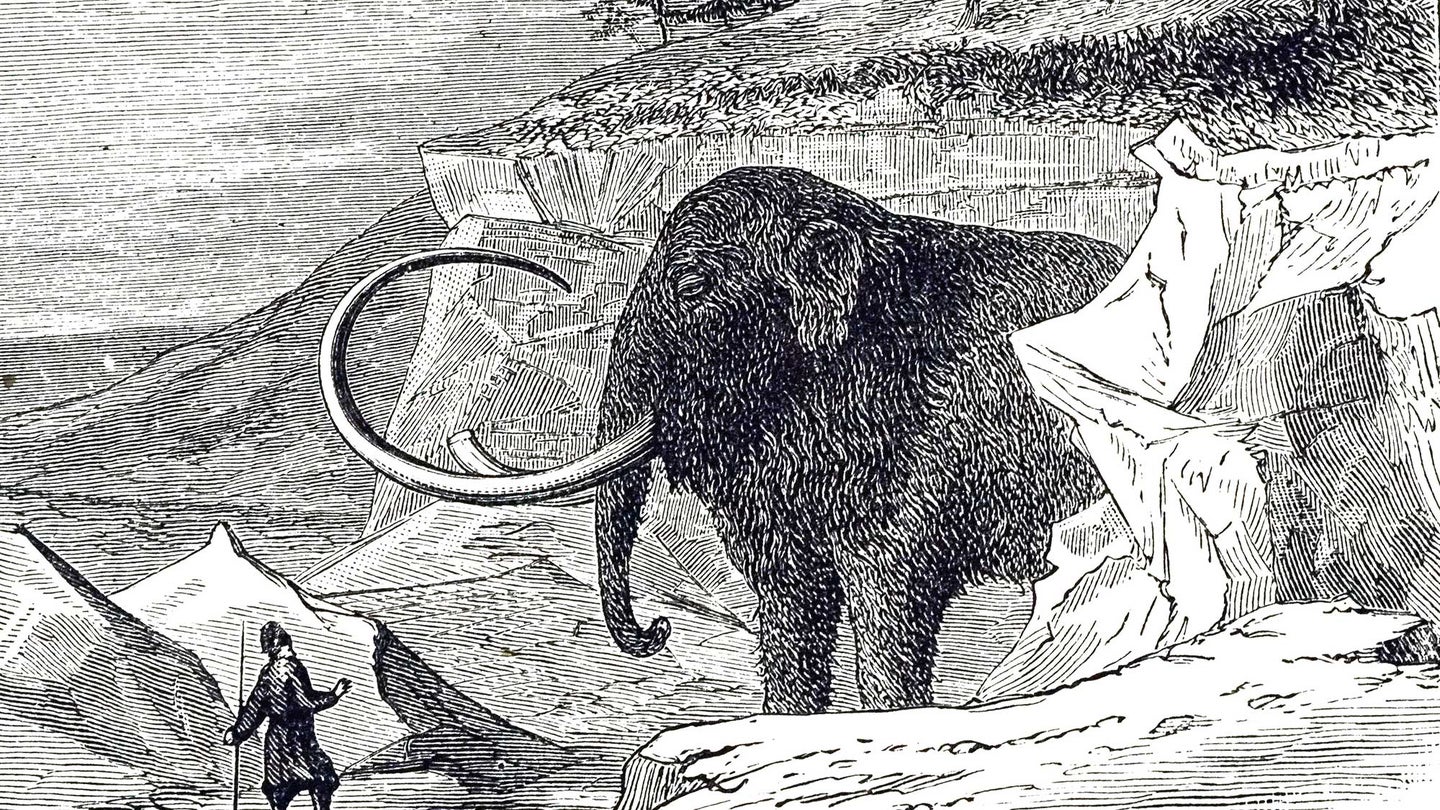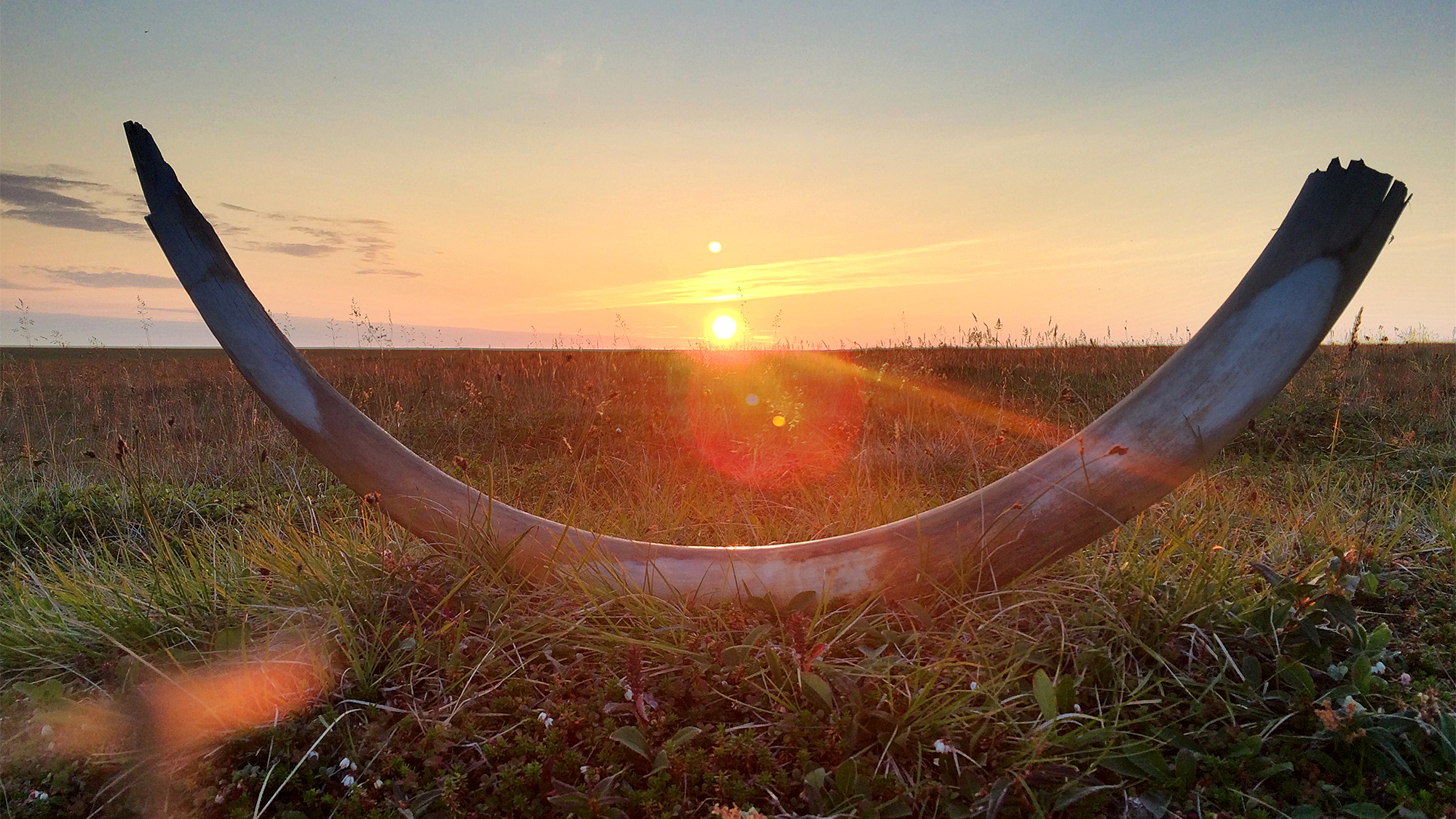
While the extinct woolly mammoth and present day elephants may be similar in size and many physical features, scientists are still learning more about what makes the giant elephant ancestors stand apart. The Woolly mammoth went extinct around 4,000 years ago, possibly due to changes in the Earth’s climate, when the vegetation that they survived on became too wet to consume when ice melted, but scientists have uncovered samples of its DNA from specimens preserved in ice and other fossils.
Scientists found that many of the animal’s trademark features–like large fat deposits and woolly coats–were genetically encoded in the earliest woolly mammoths, but became more defined over 700,000 years of evolution. While woolly mammoths lived in northern parts of America and Eurasia, the specimens in this study came from an area now known as Siberia. The study published April 7 in the journal Current Biology also located a gene with several mutations that may have been responsible for the woolly mammoth’s tiny ears.
[Related: This is the most-complete woolly mammoth ever found in North America.]
“We wanted to know what makes a mammoth a woolly mammoth,” said study co-author and paleogeneticist David Díez-del-Molino of the Centre for Palaeogenetics in Sweden in a statement. “Woolly mammoths have some very characteristic morphological features, like their thick fur and small ears, that you obviously expect based on what frozen specimens look like, but there are also many other adaptations like fat metabolism and cold perception that are not so evident because they’re at the molecular level.”

The team compared 23 Siberian woolly mammoth genomes with 28 modern-day Asian and African elephant genomes. Though woolly mammoths are hypothesized to have been on Earth as long as 2.4 million years ago, their genes had accrued a large number of mutations specifically during those 700,000 years in Siberia. Twenty-two of the woolly mammoths in the study had relatively “modern” genomes, meaning that they had lived within the past 100,000 years. One sample named Chukochya was from an animal that lived roughly 700,000 years ago and is one of the oldest known woolly mammoths scientists have discovered.
[Related: Scientists made a woolly mammoth meatball, but don’t grab your fork yet.]
“Having the Chukochya genome allowed us to identify a number of genes that evolved during the lifespan of the woolly mammoth as a species,” study co-author and evolutionary geneticist Love Dalén from the the Centre for Palaeogenetics said in a statement. “This allows us to study evolution in real time, and we can say these specific mutations are unique to woolly mammoths, and they didn’t exist in its ancestors.”
The team found highly evolved genes related to fat storage and metabolism, like the ones modern-day polar bears and reindeer have, even though those animals are not related to woolly mammoths. According to Díez-del-Molino, this is a sign of convergent evolution–the evolution of two lineages that are similar, but it is not linked to a common ancestor–for the genes in cold-weather adapted mammals.
[Related: Researchers retraced a woolly mammoth’s steps 17,000 years after it died.]
The relatively large woolly mammoth genome sample size helped the team pinpoint the genes that were common across the species. These genes were likely adaptive–which arise in response to a specific situation–instead of a naturally occurring variation. These genes also may have only been present in the single individual animal studied.
“We found that some of the genes that were previously thought to be special for woolly mammoths are actually variable between mammoths, which means they probably weren’t as important,” said Díez-del-Molino.
Compared with the newer woolly mammoth genomes, the Chukochya genome shared roughly 91.7 percent of the mutations that caused protein-coding changes in the more modern woolly mammoths. This high overlap shows evidence that their thick fur, fat metabolism, and cold-perception abilities were likely already present when the woolly mammoth first diverged from its ancestor the steppe mammoth, between 800,000 to 600,000 years ago.
Older woolly mammoths like Chukochya also likely had larger ears and a different wool type and texture and those traits continue to develop over time. The more modern genomes also had several immune mutations in T cell antigens that were not present in Chukochya. The team believes that these mutations were likely related to developing better immune responses to emerging viruses.
All the woolly mammoth genomes were from specimens collected in Siberia, but the researchers hope to branch out and compare them with North American specimens. “We showed a couple of years ago that there was gene flow between woolly mammoths and the ancestors of Colombian mammoths, so that’s something that we will need to account for because North American woolly mammoths might have been carrying non-woolly mammoth genes as well,” said Dalén.
The post Woolly mammoths evolved tiny ears over 700,000 years in Siberia appeared first on Popular Science.
Articles may contain affiliate links which enable us to share in the revenue of any purchases made.
from Popular Science https://ift.tt/m41nsvG



0 Comments